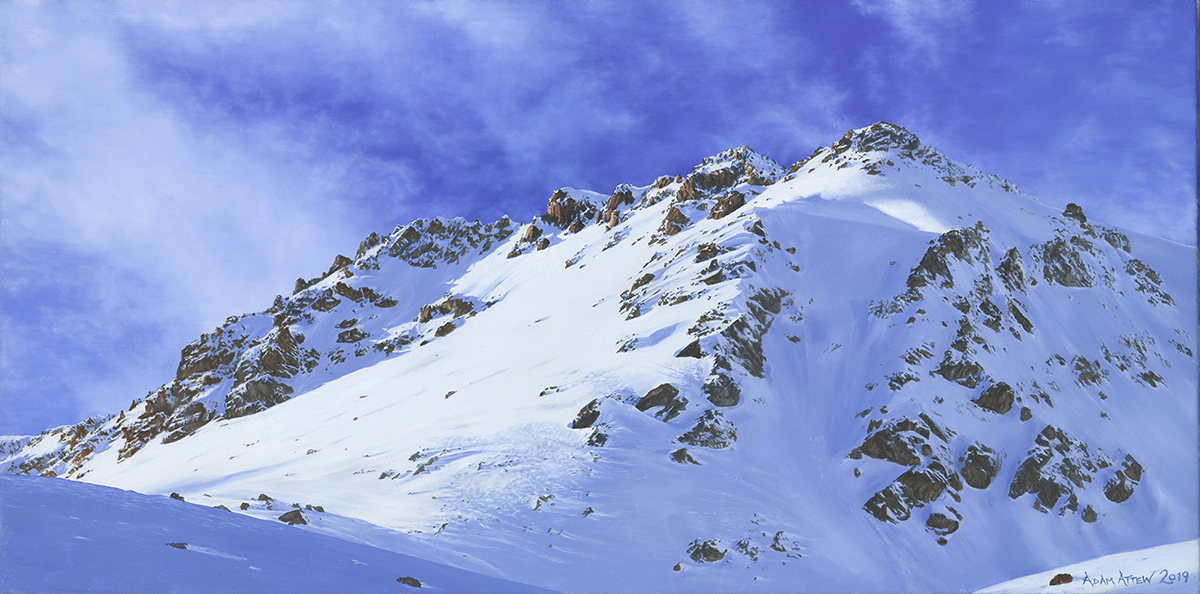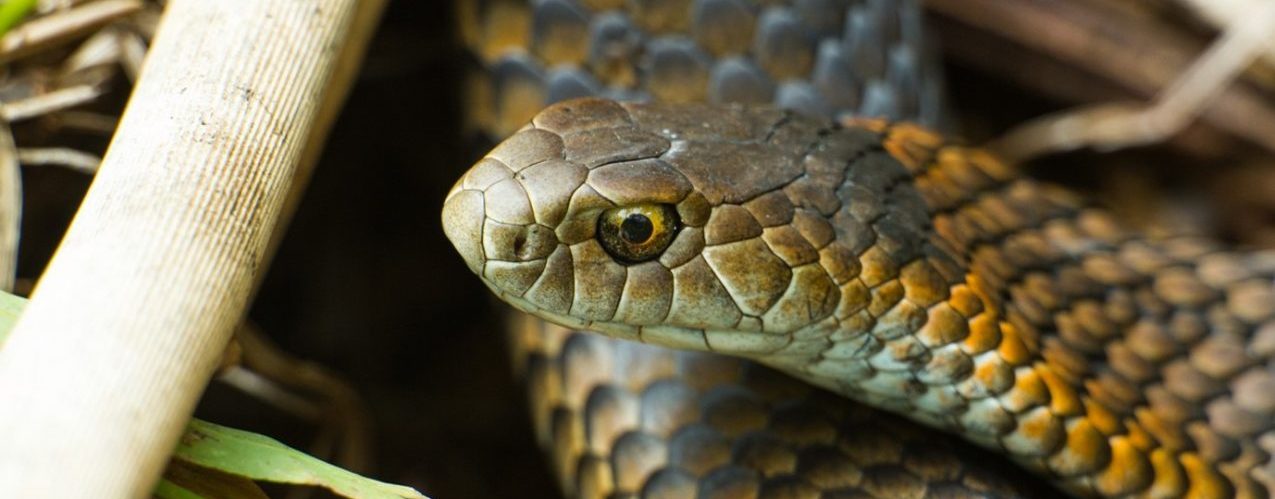A gentle breeze whips the snow into a frenzy, as if dancing in the alpine air. Above, the winter sun radiates through the azure sky, and I feel its warmth against my face as I bootpack the final few meters to the summit of Squaw Peak, the highest point of Palisades Tahoe at 2,708-metres. From here, I see the glass-like surface of Lake Tahoe to the east, and beyond that the Sierra Nevada Mountains (Sierras) and the open expanse of Nevada. It’s not the California I know, nor one I’d ever considered as a skiing destination, but here I stand, and I’m in awe.
The mid-latitude location of the Sierras and its proximity to the Pacific Ocean gives the range an unusually mild mountain climate, though it also dumps snow. In a process known as orographic lift, when moist air from the Pacific hits the range, it condenses as it rises, depositing vast swathes of powder along its 430-mile length. With this knowledge eddying in my mind, the decision was made to head west and explore a number of the Golden State’s ski areas.

Palisades Tahoe offers 6,000 Acres of uninterrupted legendary skiing terrain and stunning views of Lake Tahoe.
I had first heard about Palisades Tahoe (formerly Squaw Valley) through the pro skiing circuit and the giants that have called it home; Shane McConkey, Cody Townsend, Michelle Parker, the list goes on. It boomed in popularity after hosting the 1960 Winter Olympics and today boasts 3,600-acres of skiable terrain over 170 trails. Combined with over seven metres of snow and up to 300 days of sunshine annually, it’s no surprise that it is one of North America’s top ski resorts. And while it has become a mecca for freeride skiers seeking challenging lines, more than half of the trails are beginner or intermediate, making it a family playground too. So, it is with bated breath that I land into Reno, a short drive away, and head into the mountains to see what the Sierras have in store for me.

Alpine Meadows, on north west shore of Lake Tahoe is ideal for family skiin
Sadly, an unseasonal dry spell means the famed powder is nowhere in sight. While deflated, I vow to make the most of the mountains nonetheless and link up with Alex Spychalsky, a former ski-racer and local racing coach who offers to show me what Palisades Tahoe has to offer. We ride the Gold Coast Funtinel and Gold Coast Express to Monument Ridge, where we use the entire mountain to warm up on gentle groomers. Despite the lack of snow, Palisade Tahoe is well equipped, and the slopes are in remarkably good condition; 40-percent of the runs benefit from snow-making machines. I enjoy chasing Spychalsky, whose edges grip the corduroy the way only a racer knows how, so by the time we reach the base, my legs are suitable warm. With that, we up the ante by hitting the ungroomed black diamond of Tower 16. It’s deeply tracked up, but the Californian sun has worked its magic and there are turns to be found in the corn. Later, we ride the infamous KT-22 – where the local pros often train (or show-off) in full view of those on the lift – before making our way to the very top of the resort. Above the headwall, I peer at the deep chutes that run into Siberia Bowl below. Even when filled in with fresh powder, these would still offer some of the best inbound drops and runs I’ve ever seen. But it’s too bare, so we ride off the backside into Sun Bowl and explore the off-piste terrain that leads to the resort boundary.

Palisades Tahoe boasts whopping stats for experienced skiers, with a summit elevation of nearly 2,800m and 870m of vertical drop.
Over a beer at the end of the day, I’m rather taken with the resort. From a single day, it’s clear to see why it draws so many people in. The wide, open expanses of the slopes are complemented by the steep inbound terrain that means it never feels crowded, and there’s always somewhere new to discover.

After riding Palisades Tahoe, why not visit the neighbouring town of Truckee? Its historic centre was a railway town in the 1800s and looks like the set of an old Western movie.
Palisades Tahoe now also incorporates the Alpine Meadows ski area, a mere 12-minute drive away. Here, the 2,600-acres of terrain is primarily aimed at expert skiers, with lift-accessible off-piste terrain, seven bowls, tight trees, and steep chutes. I arrive early and meet up with local North Face Mountain Guide Eric Petlock to explore some of the more technical terrain on offer. “The way Alpine Meadows’ terrain is laid out means there’s a lot of accessible off-piste terrain either via the chairlift or having to hike for a little bit. And that kind of weeds out some of the skiers,” Petlock tells me. “More powder-hunting people come here because they want to go off and hike and find the little powder stashes. It just has more of an adventure vibe.” With fewer people, the result is snow that stays better for longer, and even days after new snowfall, there’s still fresh powder to be found. Eager to explore, we ride the Treeline Cirque chairlift to access the backside of the mountain. From the top of the Alpine Bowl Chair, Eric suggests we bootpack the High Traverse to access Ward Peak at 2,633-metres and the spruce-filled off-piste area of Sun Bowl below it. “We’ve not had a lot of snow recently, but powder often remains in the bowl as it’s north-facing and protected by the trees,” he says. “They keep the sun off, which keeps the snow nice and soft.” We drop into the bowl, and while it is still tracked up, it is in far better condition here than I thought, and I’m thankful for the guidance of Eric to access this terrain.

Mammoth Mountain is a lava dome complex formed in a series of eruptions that ended 57,000 years ago.
My journey continues and I leave the Palisades region and travel 180-miles south towards Mammoth Mountain. The pearlescent water of the frigid Lake Tahoe shimmers as I drive around its northern edge. I dip into the Sierra foothills in Nevada and past Yosemite National Park (access is closed from here during winter) before winding my way back up the Eastern Sierras into Inyo National Forest and Mammoth Mountain. Mammoth is a fitting name for such a resort, with 3,500-acres of skiable terrain and almost a kilometre of vertical drop from the summit, which lies at 3,369 metres and makes it the highest resort in California. This elevation also results in the driest snow in the state, and often the best powder is found here.
What is immediately apparent in Mammoth is the sheer size of it. With 175 marked runs and the entire backside of the resort, there are seemingly endless possibilities. This time exploring the mountain myself, I opt to ride to Lower and Upper Panorama Gondola to the summit and drop into Climax, the double black diamond accessed from the ridgeline. Hardpack snow on this north face makes for an unruly and teeth-chattering descent, so I quickly head to the backside of the mountain, where the sun of another Californian bluebird day bathes the faces below and produces the perfect corn. My legs burn as I charge through the spring-like slush, lapping the tight firs and pines of Outpost Glades that leads from Chair 14 to The Outpost. It is day very well spent and I’m exhausted by the end of it. With over 50 percent of the terrain classified as “Difficult, Very Difficult or Extremely Difficult”, this is a resort that suits the more experienced skier. And while I’m not a park skier, for those with a penchant for air, Mammoth boasts 10 parks, over 50 jumps and two halfpipes, and regularly hosts major freestyle competitions.

The resort of Edgewood, right on the shores of Lake Tahoe and surrounded by the Sierras, is known for its commitment to luxury and refinement.
With a beer in hand, I soak up the last of the Californian sun on the deck of Steeps Bar at McCoy Station in the middle of the mountain. I think about my whistle-stop tour of California’s foremost ski areas. Unlike the Alps, which have been gnarled by recent glaciation, the Sierras are less dramatic, but not less impressive, and offer a totally unique skiing experience. Under a blanket of fresh powder, I’m certain these resorts would offer some of the best inbound skiing around, and one day, I intend to find out.
Ski Palisades Tahoe and Mammoth Mountain with the Ikon Pass HERE.
Find out more about Palisades Tahoe HERE.
Find out more about Mammoth Mountain HERE.
Words: Hugh Francis Anderson @hughfrancisanderson
Glossary:
Bluebird – A sunny, cloudless day
Bootpack – Hiking to access ski terrain
Corduroy – Freshly groomed pistes that resemble corduroy
Corn – Snow warmed by the sun but not yet wet and slushy
Freeride – Off-piste skiing in natural terrain
Freestyle – The performance of aerial flips and tricks, often in a snow park.
Powder – Fresh, untouched soft snow which is usually deep.














Show Comments +